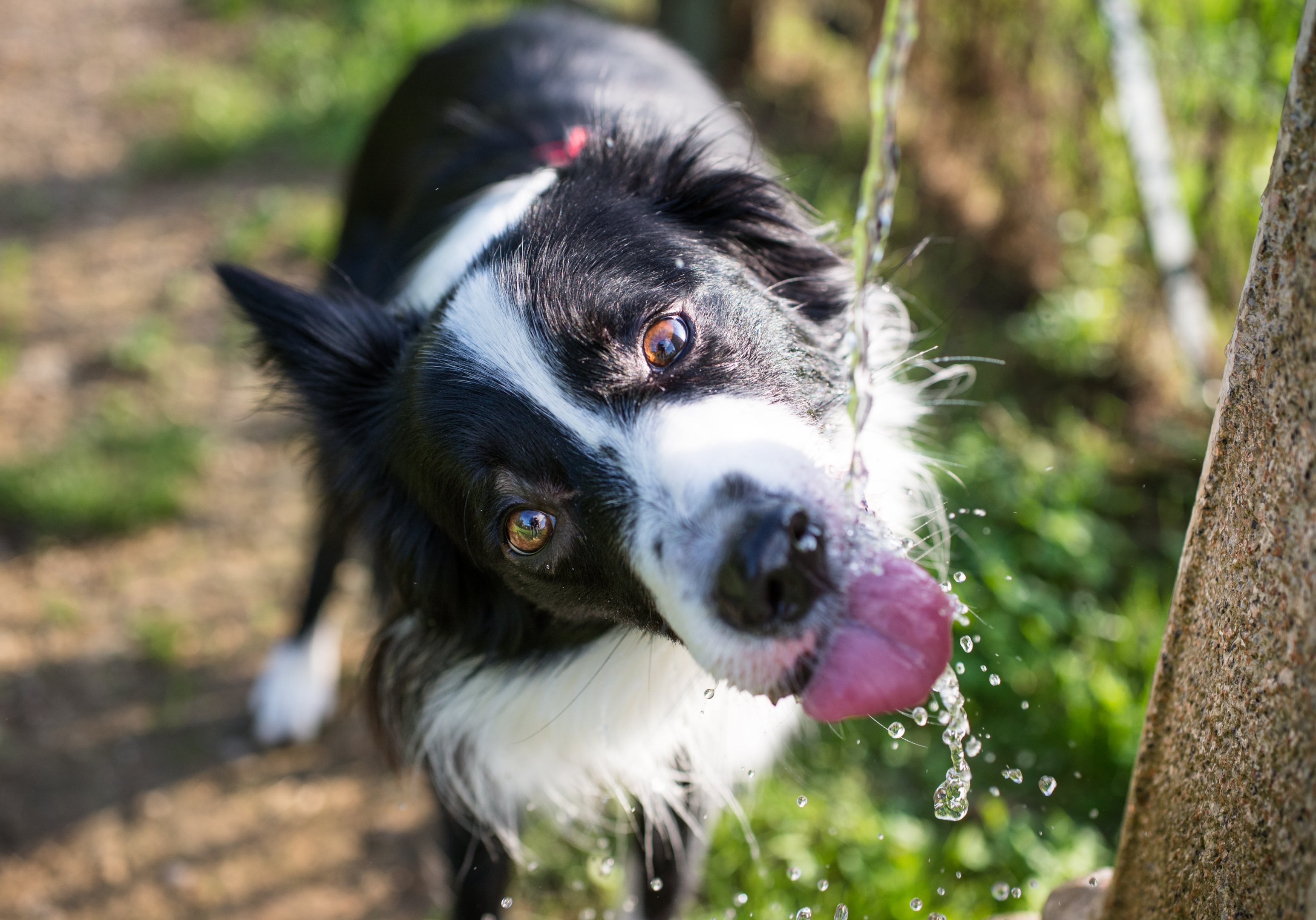
Have you ever noticed a red bump on the corner of your dog's eye, resembling a tiny cherry? If so, your furry friend might be experiencing what's a common dog eye problem known as cherry eye.
While surgery is often suggested as a solution, there are non-invasive approaches that you can opt for to deal with this issue.
In this article, we'll explore what cherry eye is in dogs, what can cause it, and alternative methods to treat it without the hassle of surgery. We'll also talk about different preventive measures you can take to prevent this in your dog.
So, without further ado, let's jump right in and get to know all about dog cherry eyes.
What is Cherry Eye in Dogs?

Unlike humans, dogs have three eyelids. The third eyelid gland, called the nictitating membrane, is inside the lower eyelid and helps protect a dog's eyes.
The third eyelid is like a soft pink curtain in a dog's eye. It has a small gland, like a tiny cherry pit, that makes tears for about one-third of the dog's eye tears. Normally, you can only see a small pink triangle located in the inner corner of the eye.
But sometimes, this tiny gland can suddenly pop out, either in one eye or both at the same time. This is what we call the cherry eye. It's when the gland comes out and becomes visible.
What Causes Cherry Eyes in Dogs?

The nictitating membrane is inside the lower eyelid and protects a dog's eyes. It has an important gland that makes tears in your dog's eye.
Sometimes, the ligament holding this gland stretches or comes off from the orbital bone in the eye. When that happens, the gland can pop out, or as they call it, prolapse in veterinary sciences, and can be seen above the eyelid. This causes a condition called cherry eye.
While any dog can get cherry eye, certain breeds are more likely to get it. Breeds like english bulldogs, cocker spaniels, and cane corsos often get this, usually before they turn one. Other breeds that can get cherry eye are Basset hounds, Beagles, Boxers, Boston terriers, French bulldogs, Rottweilers, Saint Bernards, and Pugs.
Usually, dogs with short noses, small toy breeds, and teacup dogs are more likely to get cherry eye compared to dogs with longer snouts. Also, young dogs, especially puppies under one-year-old, can easily get cherry eye.
How to Treat Cherry Eye in Dogs without Surgery?
The longer the cherry eye is left untreated, the tougher it becomes to put it back in its place, and this can lead to more problems, so it is better to deal with it. These issues include the eye getting too dry, harm to the cornea from constant rubbing, and damage to the gland itself.
Because of this, it's not a good idea to try fixing cherry eye at home without consulting your vet first.
However, some things pet owners can try out these home remedies. The home method of treatment includes using either moist cloths or artificial dog tears. This will help calm the afflicted dog. Just gently massage the prolapsed tear gland located in the nictitating membrane until it pops back into place.
Let's discuss these in detail.
-
Artificial tears
Cherry eye typically doesn't hurt in the beginning, and many dogs are okay with their owners gently putting simple artificial tears or dog-safe eye drops on the affected eye until they can see the vet.
However, if your dog resists or you're unsure about the right product, it's better not to do it forcefully. Most importantly, don't use anything other than plain artificial tears available at the pharmacy without checking with your vet first.
The eyes are an extremely sensitive organ, and falsely marketed natural substances can be irritating and create more problems.
-
Tea bag compress
A few dog owners have shared a trick for handling an unexpected cherry eye incident at home. You can soothe your dog's cherry eye by placing a cool teabag on the eye for a while, keeping the dog calm.
It's important that the teabag isn't dripping; the aim isn't to get tea into the dog's eye. Instead, the goal is to use something damp, comforting, and cool before you try to gently move the gland back into its normal position.
-
Massage
When your dog is relaxed or somewhat sleepy, it is recommended that gently massaging the lower eyelid can effectively bring the gland back into its normal position.
This technique involves softly massaging the lower eyelid to guide the protruding gland back to where it should be.
It's crucial to be gentle and patient during this process to avoid causing any discomfort to your furry friend. If you're unsure or your dog seems uncomfortable, it's best to consult your veterinarian before attempting home remedies.
When Should we get a Veterinary Ophthalmologist on Board?
In nearly all cases, cherry eye surgery is necessary. It's crucial to make an appointment with your veterinarian for an official diagnosis if you notice the symptoms of a cherry eye in your dog and discuss the most suitable surgical approach for your dog.
There are three main surgical options through which vets can fix cherry eye. First, they might sew the popped-out gland back in place. But if the tissue is too weak, they might create a new pocket to secure it for good.
Taking out the whole tear gland was also common, but now it's only done as a last choice. If they resort to this option, it will affect the dog's tear production, and your dog will need artificial tears for the rest of its life to stop the eyes from getting too dry and causing problems. That's the only way you can produce your dog's tears.
Attempting to treat cherry eye at home is not recommended by veterinarians. While they might prescribe a topical ointment to temporarily relieve your dog's eye, it won't address the underlying issue and is only a short-term solution to ease their discomfort. Consulting your veterinarian is important to ensure the proper and lasting treatment for your dog's cherry eye.
Cherry Eye Surgery Cost
A cherry eye surgery can cost anywhere between $300 and $1,900 on average, whether it's one eye or both. Pet insurance can help pay for the surgery and ongoing care, but it won't cover the costs if the problem shows up before you get the insurance.
Cherry Eye Prevention
Unfortunately, you can't prevent your dog from getting cherry eye. However, since cherry eye might have a genetic link, it's wise to avoid breeding dogs with the condition to prevent passing it on to future generations.
But you can take care of your dog's eye health by giving it good food, ensuring it gets plenty of exercise to stay in good shape, and regularly visiting the vet for check-ups and vaccinations. If you ever worry about your pup's eyes, it's essential to talk to your vet.
Final Words
Addressing cherry eye in dogs without resorting to surgery requires a careful and informed approach. While surgery is often the recommended course of action, especially in severe cases, there are non-invasive methods that pet parents can consider with the guidance of a veterinarian.
Understanding the causes behind cherry eye, such as genetic predisposition, and recognizing the early signs of cherry eye are extremely crucial steps in effective pet care.
Exploring at-home remedies, like cool teabag compresses and gentle massages, can offer some relief and potentially aid in repositioning the prolapsed gland. However, it's vital to consult with a vet before attempting any home treatments.
Moreover, maintaining overall canine health through a balanced diet, regular exercise, and routine veterinary check-ups is essential in preventing and managing various health issues, including the ones related to the eyes.
While there may not be a foolproof way to prevent cherry eye, responsible breeding practices that refrain from mating dogs with this condition can help prevent it.
By combining home-based care with professional advice, pet parents can strive to enhance their dog's comfort and quality of life, even when surgery is not the immediate course of action.
Frequently Asked Questions
What are some of the common symptoms of cherry eye in dogs?
Finding cherry eye in dogs is not too hard. Just check for a red, puffy lump in the inside corner of their eye – it could be small or big. Sometimes, there might be eye gunk, but not always. Moreover, seeing your dog rubbing their eye a lot could mean something is up.
Can Cherry Eye go away on its own?
Cherry eye typically doesn't resolve on its own and often requires veterinary attention, especially if it persists or worsens.
What happens if the cherry eye is left untreated?
Untreated cherry eye can lead to discomfort, dry eyes, and potential corneal damage, emphasizing the importance of early veterinary intervention.



















